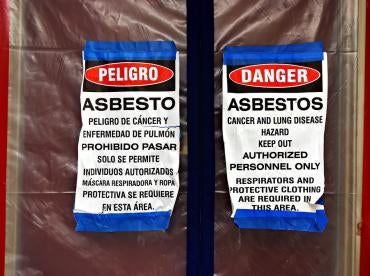On November 22, 2016, the Pennsylvania Supreme Court refused to reverse a verdict in an asbestos case involving a court ruling that potentially involves the “every exposure” theory.
Plaintiff’s epidemiologist testified, “[A]ll of the exposures that can be documented should all be considered as contributory to developing [plaintiff’s] disease.” The manufacturer of the product at issue moved for a non-suit, arguing that the epidemiologist’s testimony was tantamount to an opinion that “each and every breath” of asbestos fibers was a substantial causal factor in causing plaintiff’s disease. In a pretrial ruling, the court prohibited the introduction of such testimony; however, the court denied the manufacturer’s motion, finding that the epidemiologist had not proffered testimony founded on an “each and every breath” exposure theory.
The manufacturer appealed to the Pennsylvania Superior Court – the state’s intermediate appellate court – arguing that the epidemiologist’s testimony was insufficient to establish that plaintiff’s exposure to asbestos-containing friction products at the dealership was a substantial causal factor. The Superior Court ruled that the epidemiologist’s testimony was predicated on published research, was consistent with the testimony of the manufacturer’s own expert witness testimony, and was supported by international scientific consensus.
The manufacturer appealed to the Pennsylvania Supreme Court. The majority of the divided court held that the epidemiologist had not testified that a single exposure to asbestos was a substantial cause of plaintiff’s disease; rather, the lower courts had properly applied the “frequency, regularity and proximity” criteria for the determination of causation in asbestos litigation. Under this standard, a plaintiff can establish causation by proving frequent, regular, and proximate exposure to an asbestos-containing product. The majority observed, the manufacturer “[h]as confused or conflated the ‘irrefutable scientific fact’ that every exposure cumulatively contributes to the total dose ... with the legal question under Pennsylvania law ... whether particular exposures to asbestos are ‘substantial factors’ in causing the disease.”
The dissent concluded that significant evidentiary uncertainties in determining product-specific causation entitled the manufacturer to a new trial at which a jury could consider a comparative assessment of the plaintiff’s asbestos exposures. Conversely, the majority opined, “Comparison of [plaintiff’s] other occupational exposures to asbestos was unnecessary.”




 i
i

